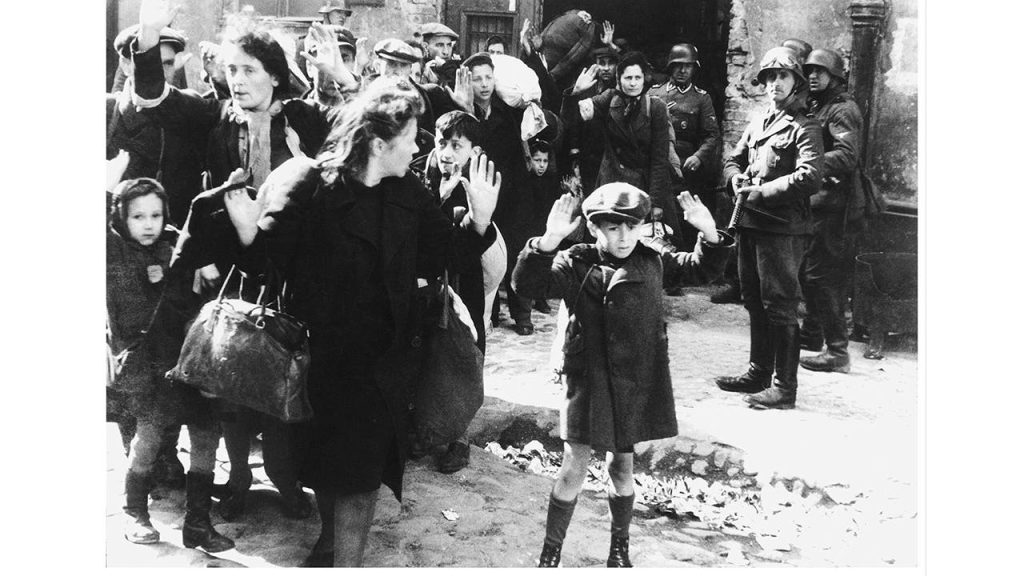On September 1, 1939, Nazi Germany’s invasion of Poland triggered World War II, leading France and the United Kingdom to declare war on Germany in response. The Soviet Union also invaded Poland from the east, resulting in the division and annexation of Poland under the German-Soviet Frontier Treaty. Following these events, the Nazis targeted Poland’s significant Jewish population, forcing them into urban ghettos before transporting them to extermination camps such as Majdanek and Treblinka. As a result, the Jewish population faced extreme brutality and persecution during this period.
In the summer of 1942, during the Grossaktion Warsaw, a large number of Jews from the Warsaw Ghetto were transported to Treblinka. This event prompted the formation of resistance groups including the Jewish Combat Organization and the Jewish Military Union, leading to the largest Jewish military uprising against the Nazis. The resistance initially refrained from military action but later decided to fight back as news of the Nazi plan for Jewish extermination spread. The Warsaw Ghetto Uprising began on January 18, 1943, with sparsely armed Jewish families taking on heavily armed Nazi forces, inflicting casualties despite suffering losses.
The climax of the Warsaw Ghetto Uprising occurred on Passover eve, April 19, 1943, when German police and SS forces entered the ghetto to complete the deportation plan. The Jewish fighters put up strong resistance, using Molotov cocktails and grenades to slow the Nazis’ progress. Despite facing fierce German retaliation, the Jews chose to fight to the end, refusing to let the Nazis dictate their fate. The urban warfare in the Warsaw Ghetto continued for a month, with Jewish defenders retreating to bunkers, dugouts, and sewers to slow the German advance.
Following weeks of combat, the Jewish resistance fighters lost their commanders, leading to the end of major engagements by April 29, although sporadic resistance continued until early June. Approximately 13,000 Jews were killed during the uprising, with the rest deported to concentration camps like Majdanek and Treblinka. The Nazis demolished nearly all structures in the Warsaw Ghetto, including the Great Synagogue of Warsaw, which was blown up by SS officers. Justice eventually caught up with Nazi commanders like Jurgen Stroop, who oversaw the brutal treatment of Jews in Poland, as they either died in combat or faced execution or imprisonment after being captured by Allied forces.
Despite facing overwhelming odds, the Warsaw Ghetto Uprising remains a significant moment in Jewish history, showcasing the resilience and courage of the human spirit in times of adversity. The uprising inspired other resistance movements in Poland and beyond, highlighting the importance of standing up against oppression and injustice. In 2018, Simcha Rotem, the last survivor of the Warsaw Ghetto Uprising who played a crucial role in the resistance effort, passed away in Jerusalem at the age of 94. His legacy and the bravery of all those who fought in the uprising continue to be remembered and honored to this day.


